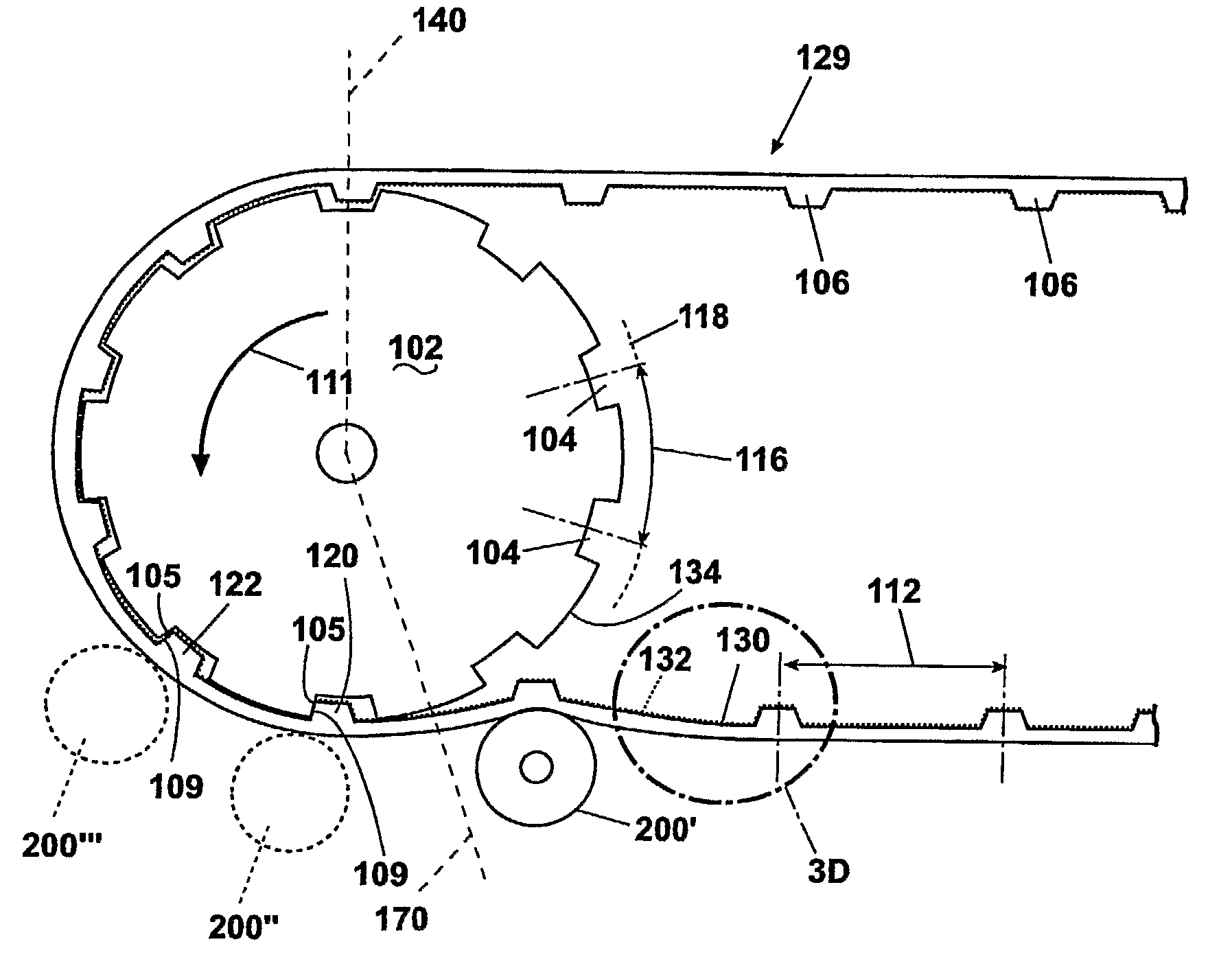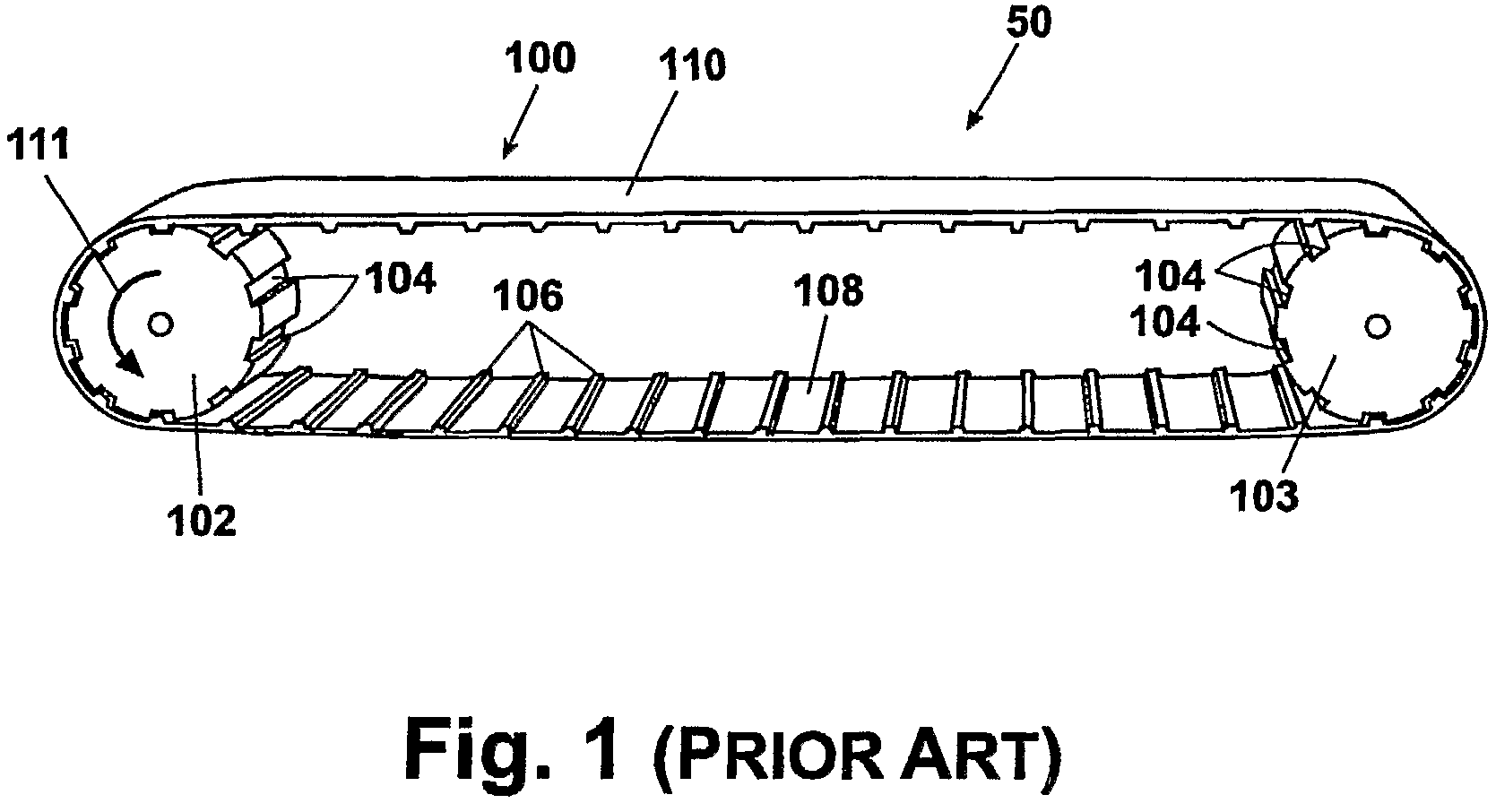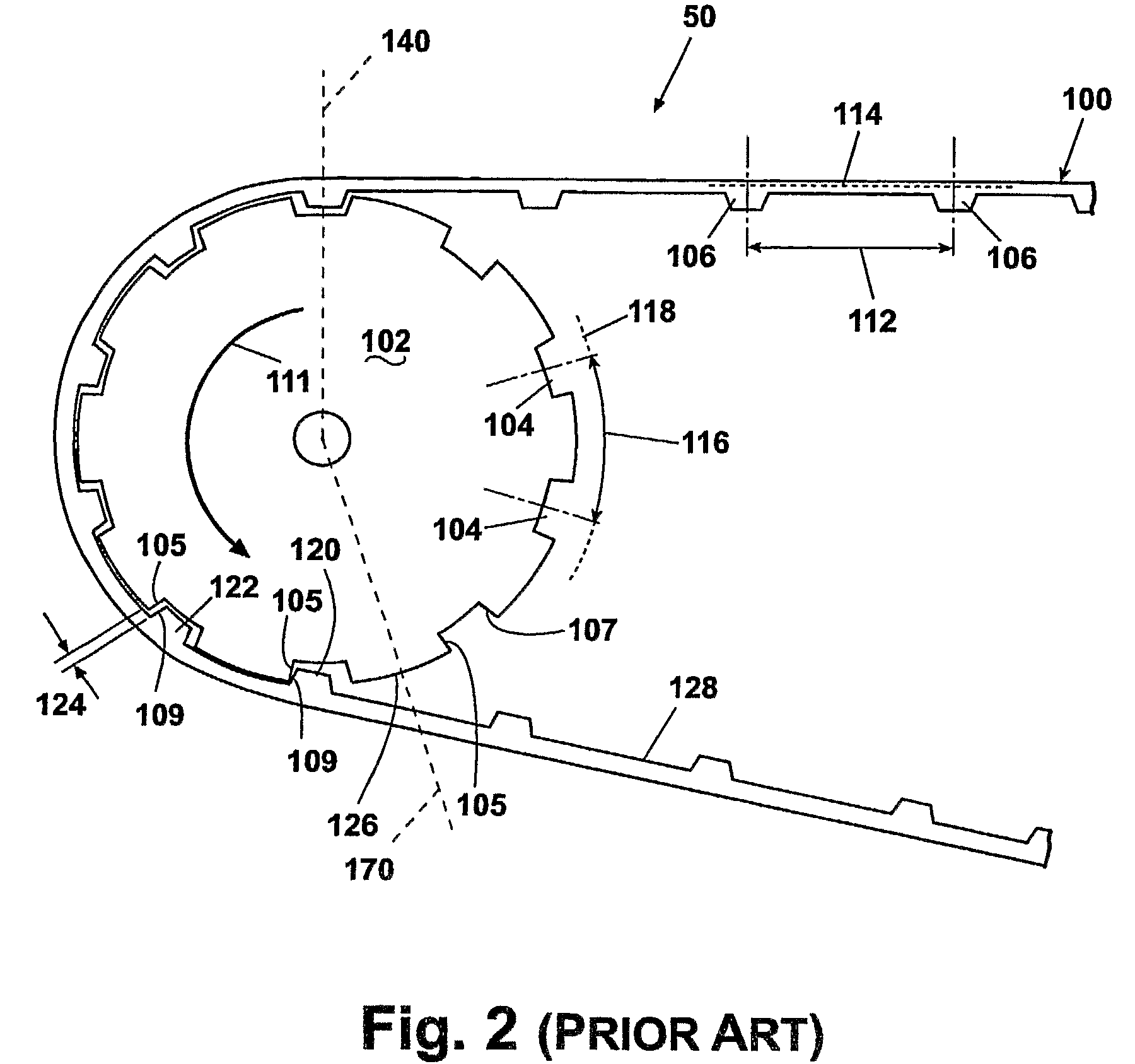Low friction, direct drive conveyor belt
a conveyor belt, low friction technology, applied in the direction of gearing, transportation and packaging, hoisting equipment, etc., can solve the problems of affecting the friction coefficient of friction, affecting the tension of the belt, and the friction driven flat belt is subject to friction. , to achieve the effect of reducing friction
- Summary
- Abstract
- Description
- Claims
- Application Information
AI Technical Summary
Benefits of technology
Problems solved by technology
Method used
Image
Examples
Embodiment Construction
[0029]Some problems with known thermoplastic direct drive belts are shown in a direct drive conveyor 50 of FIGS. 1 and 2. An endless belt 100 is seen in FIG. 1 in a typical installation between two pulleys 102 and 103. The pulleys 102, 103 are conventional and they can be any of a number of different forms and sizes. Each pulley 102 or 103 has a number of transverse grooves or sheaves 104 spaced around its circumference. Each sheave 104 has a driving face 105 and an opposed, non-driving face 107. The belt 100 has a plurality of teeth 106 equidistantly spaced from each other on the inside surface 108 of the belt, each tooth having a driving surface 109. The teeth 106 engage the sheaves 104 of each pulley as the belt wraps around the pulley. At least one pulley, e.g. pulley 102, is a drive pulley; the other 103 can be an idler or slave pulley. In this configuration, the upper span of the belt will carry loads as the belt 100 travels in the direction of arrow 111. The belt 100 has an o...
PUM
 Login to View More
Login to View More Abstract
Description
Claims
Application Information
 Login to View More
Login to View More - R&D
- Intellectual Property
- Life Sciences
- Materials
- Tech Scout
- Unparalleled Data Quality
- Higher Quality Content
- 60% Fewer Hallucinations
Browse by: Latest US Patents, China's latest patents, Technical Efficacy Thesaurus, Application Domain, Technology Topic, Popular Technical Reports.
© 2025 PatSnap. All rights reserved.Legal|Privacy policy|Modern Slavery Act Transparency Statement|Sitemap|About US| Contact US: help@patsnap.com



